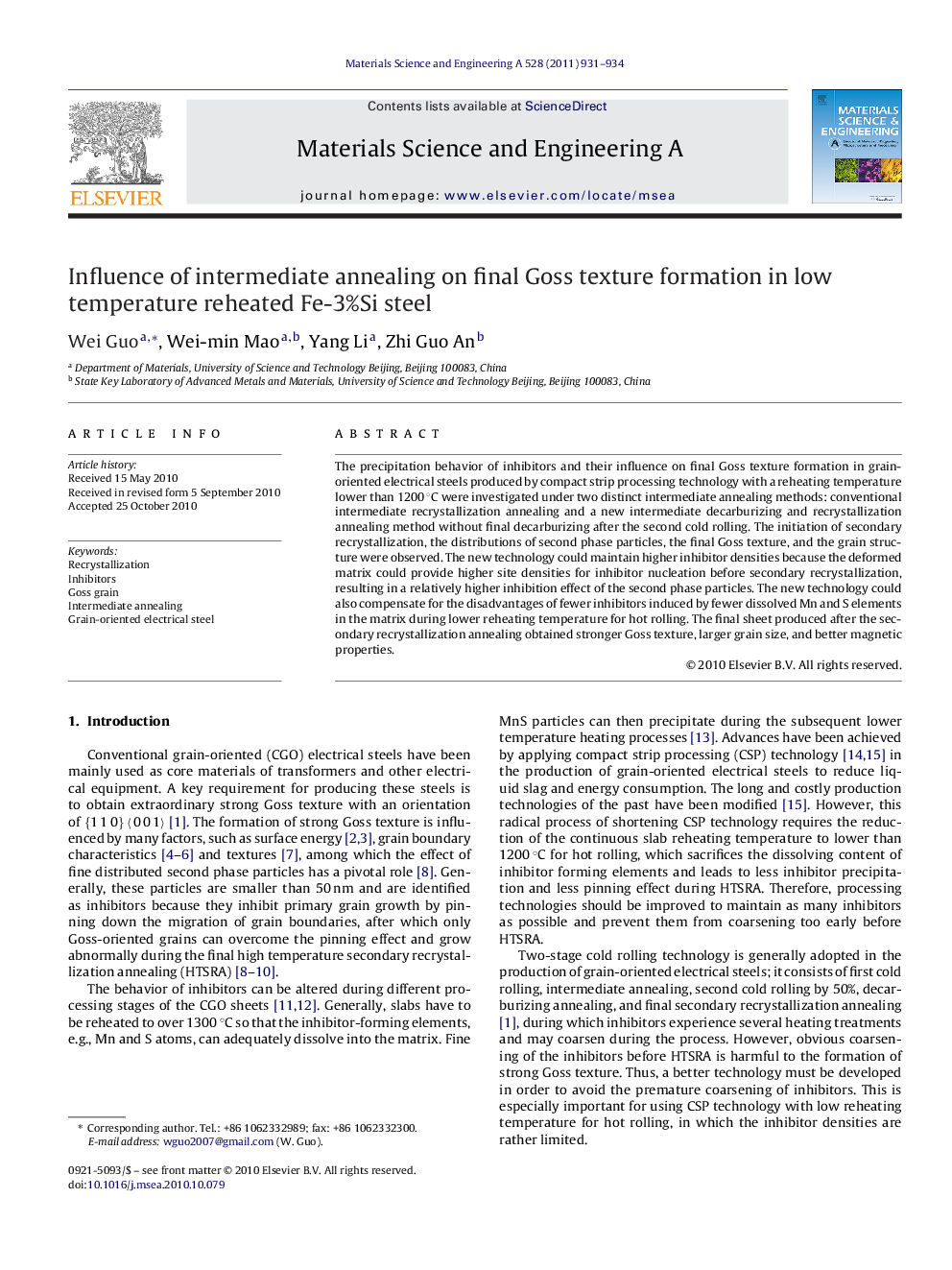| Article ID | Journal | Published Year | Pages | File Type |
|---|---|---|---|---|
| 10646118 | Materials Science and Engineering: A | 2011 | 4 Pages |
Abstract
The precipitation behavior of inhibitors and their influence on final Goss texture formation in grain-oriented electrical steels produced by compact strip processing technology with a reheating temperature lower than 1200 °C were investigated under two distinct intermediate annealing methods: conventional intermediate recrystallization annealing and a new intermediate decarburizing and recrystallization annealing method without final decarburizing after the second cold rolling. The initiation of secondary recrystallization, the distributions of second phase particles, the final Goss texture, and the grain structure were observed. The new technology could maintain higher inhibitor densities because the deformed matrix could provide higher site densities for inhibitor nucleation before secondary recrystallization, resulting in a relatively higher inhibition effect of the second phase particles. The new technology could also compensate for the disadvantages of fewer inhibitors induced by fewer dissolved Mn and S elements in the matrix during lower reheating temperature for hot rolling. The final sheet produced after the secondary recrystallization annealing obtained stronger Goss texture, larger grain size, and better magnetic properties.
Related Topics
Physical Sciences and Engineering
Materials Science
Materials Science (General)
Authors
Wei Guo, Wei-min Mao, Yang Li, Zhi Guo An,
